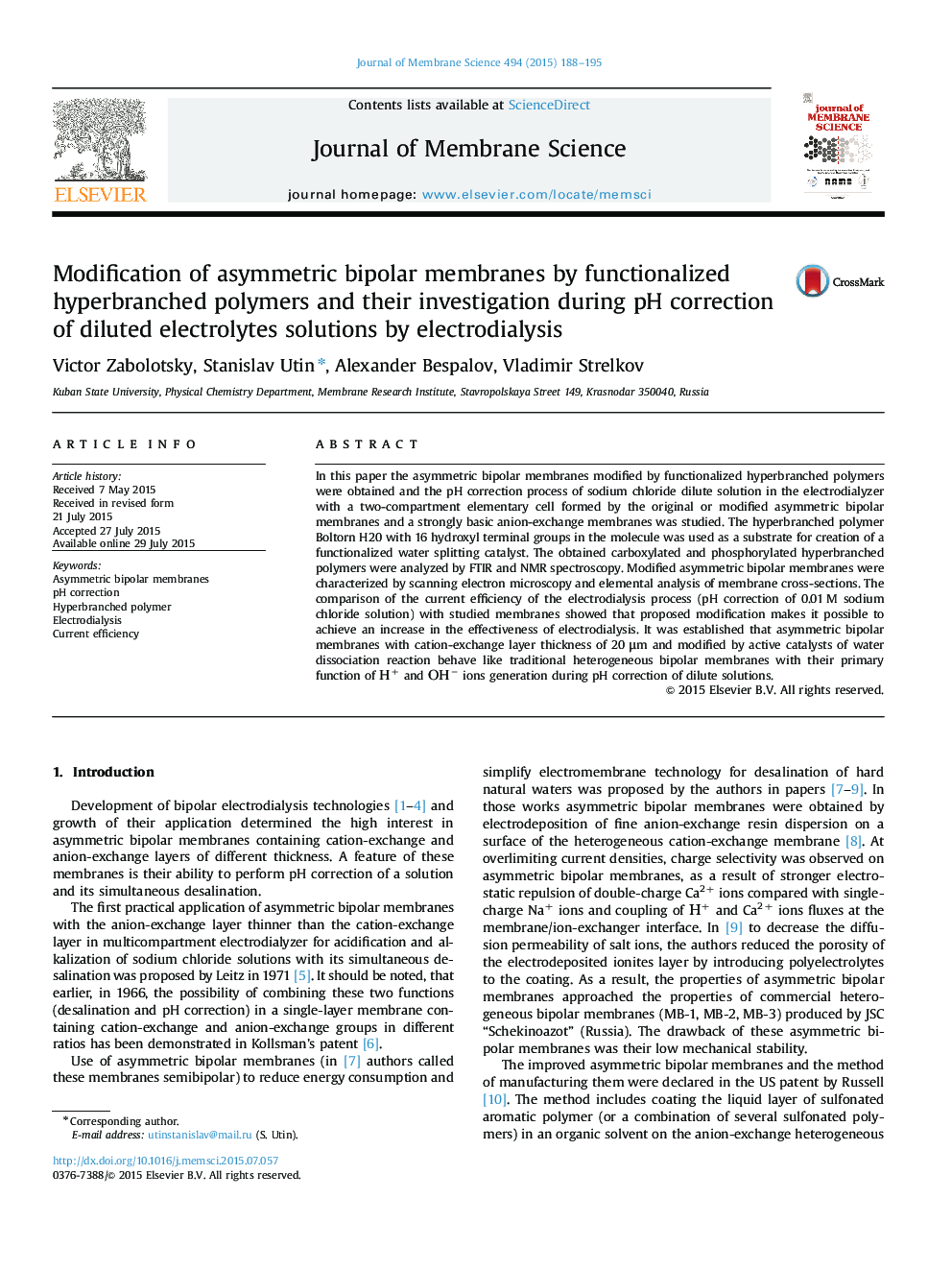| Article ID | Journal | Published Year | Pages | File Type |
|---|---|---|---|---|
| 7020925 | Journal of Membrane Science | 2015 | 8 Pages |
Abstract
In this paper the asymmetric bipolar membranes modified by functionalized hyperbranched polymers were obtained and the pH correction process of sodium chloride dilute solution in the electrodialyzer with a two-compartment elementary cell formed by the original or modified asymmetric bipolar membranes and a strongly basic anion-exchange membranes was studied. The hyperbranched polymer Boltorn H20 with 16 hydroxyl terminal groups in the molecule was used as a substrate for creation of a functionalized water splitting catalyst. The obtained carboxylated and phosphorylated hyperbranched polymers were analyzed by FTIR and NMR spectroscopy. Modified asymmetric bipolar membranes were characterized by scanning electron microscopy and elemental analysis of membrane cross-sections. The comparison of the current efficiency of the electrodialysis process (pH correction of 0.01 M sodium chloride solution) with studied membranes showed that proposed modification makes it possible to achieve an increase in the effectiveness of electrodialysis. It was established that asymmetric bipolar membranes with cation-exchange layer thickness of 20 μm and modified by active catalysts of water dissociation reaction behave like traditional heterogeneous bipolar membranes with their primary function of Ð+ and ÐÐâ ions generation during pH correction of dilute solutions.
Related Topics
Physical Sciences and Engineering
Chemical Engineering
Filtration and Separation
Authors
Victor Zabolotsky, Stanislav Utin, Alexander Bespalov, Vladimir Strelkov,
